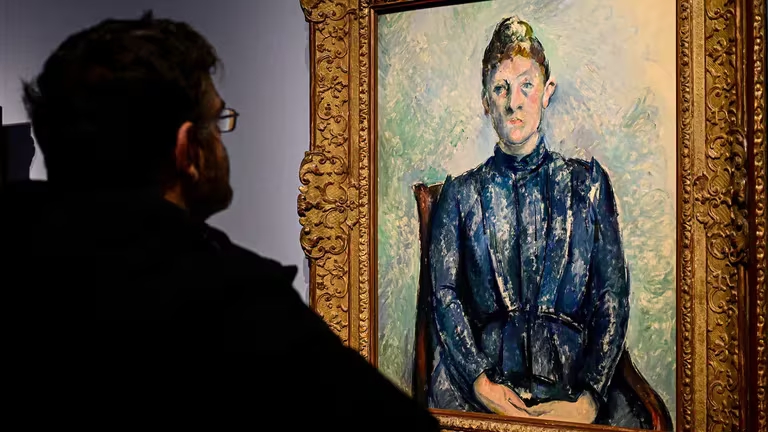An exhibition at the Palazzo Reale, featuring 52 works loaned from the museums of l’Orangerie and d’Orsay, reflects the styles of two of the founding fathers of the artistic movement that emerged in the 19th century.
Paul Cézanne and Auguste Renoir were two founding fathers of Impressionism, but a new exhibition in Milan explores their markedly different styles.
Marking 150 years since the founding of the artistic movement, 52 masterpieces by the two French artists are loaned from Paris for an unprecedented exhibition at the Palazzo Reale – alongside two by Picasso, whom they inspired. The paintings date from the 1870s to the early 20th century.
Cézanne had struck up a friendship in the 1860s with the jovial Renoir. Over the years, the pair remained friends despite their different personalities and painting styles, with Renoir visiting Cézanne’s house in southern France several times between 1880 and 1890.

Bold brushstrokes
Impressionism was born in April 1874 when a group of painters, including Cézanne, Renoir, and others like Claude Monet, broke away from the government-backed Paris Salon to hold their own independent exhibition. Their works were characterized by quick brushstrokes exploring the effects of light and color. Many of the paintings in Milan, loaned by the Musee de l’Orangerie and the Musee d’Orsay in Paris, address similar themes, from landscapes to nudes or still lifes.
But the artists’ approaches varied, from Cézanne’s bold brushstrokes focused on forms to Renoir’s more sensual touch that often sought to capture dappled light.
The artists’ studios have been recreated for the exhibition: Renoir’s in Cagnes-sur-Mer in southern France and Cézanne’s at his family home of Bastide du Jas de Bouffan in Aix-en-Provence.
Time seems to have stood still as light falls on the studios, brushes, dried paint tubes, and wooden frames bearing witness to their masters’ work.

Joy of living
The painters’ personalities were reflected in their paintings. The sober Cézanne described wanting to portray nature “according to the cylinder, sphere, cone,” while the exuberant Renoir described a painting as a “joyful, beautiful thing.”
Cézanne’s portraits are austere, the subjects gaze into space without hinting at a smile, while Renoir’s exude a sense of gentle serenity or, in the case of his voluptuous female nudes, sensuality.
Their differences reflect their backgrounds. Cézanne was the son of a banker who didn’t need to sell his art, while Renoir came from a family of poor artisans.

